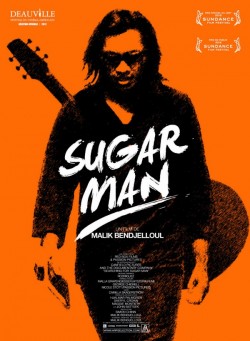NEW YORK TIMES: A thread running through Mr. Giger’s work was the uneasy meshing of machines and biology, in a highly idiosyncratic blend of science fiction and surrealism. From books to movies to record albums to magazine illustrations to a back-scratcher inspired by “Alien,” his designs challenged norms. He kept a notepad next to his bed so he could sketch the terrors that rocked his uneasy sleep — nightmarish forms that could as easily have lumbered from prehistory as arrived from Mars.“Giger’s work disturbs us, spooks us, because of its enormous evolutionary time span,” Timothy Leary, the psychedelic drug guru and a friend of Mr. Giger’s, once said. “It shows us, all too clearly, where we come from and where we are going.” Mr. Giger created many album covers as well, including one for the singer Debbie Harry’s 1981 album, “Koo Koo,” which pictures needles piercing her head and neck. In 1991 Rolling Stone magazine ranked it among the top 100 album covers. His vision of a human skull encased in a machine on the cover of Emerson, Lake & Palmer’s 1973 album, “Brain Salad Surgery,” is widely considered a classic.In the mid-1980s, Mr. Giger created a poster titled “Penis Landscape” for inclusion in an album by the punk band Dead Kennedys. After a 14-year-old girl bought the album for her 11-year-old brother, their parents filed an obscenity suit. It ended in a mistrial. MORE
ALSO: Malik Bendjelloul, the Swedish filmmaker behind the award-winning documentary Searching for Sugar Man, has died at age 36, police report. Bendjelloul was found dead in Stockholm on Tuesday, police spokeswoman Pia Glenvik told the Associated Press. Although she would not reveal the cause of death, she said police do not suspect foul play. Searching for Sugar Man won an Oscar for best documentary in 2013. The film explored the career of Detroit  singer-songwriter Sixto Rodriguez and some of his South African fans who began investigating rumors about his death in the 1990s. MORE
singer-songwriter Sixto Rodriguez and some of his South African fans who began investigating rumors about his death in the 1990s. MORE
PREVIOUSLY: Here’s a fairy tale for you. A mysterious, Dylanesque poet from the mean streets of Detroit makes a brilliant album of lush, faintly trippy folk-rock called Cold Fact. Like too many great pieces of art, the album fails to find its audience. The artist gives up on his musical dreams and settles into a twilight exile of obscurity and back-breaking manual labor. Meanwhile, unbeknownst to the artist, his music has sparked a fire and fueled massive social change across the globe in South Africa. His music is banned by the government, but everyone still seems to have a copy of it, trading it samizdat-style on 427th generation cassette tape dubs. It becomes part of the universal language of freedom there and the soundtrack to the toppling of apartheid. The people there dream of seeing the singer perform one day only to be devastated by the apocryphal word-of-mouth news that the artist long ago committed suicide on stage — some say he shot himself in the head, others say he doused himself in gasoline and lit a match. Still, he will always live on in the music. Fast forward 20 years. A musical detective in Capetown puts together the puzzle pieces and figures out that the singer is in fact alive and well and living in the inner-city ruins of Detroit. Huge concerts are planned in South Africa. The singer arrives and is hailed as a conquering hero and plays to large adoring crowds. A documentary is made and his music gets rediscovred in America, including an appearance on 60 Minutes and a sold out U.S. tour. Only this isn’t a fairy tale, it’s a true story. The mysterious artist’s name is Rodriguez, and the name of the documentary is Searching For Sugar Man. Some times even true stories have fairy tale endings. – PETE TROSHAK

